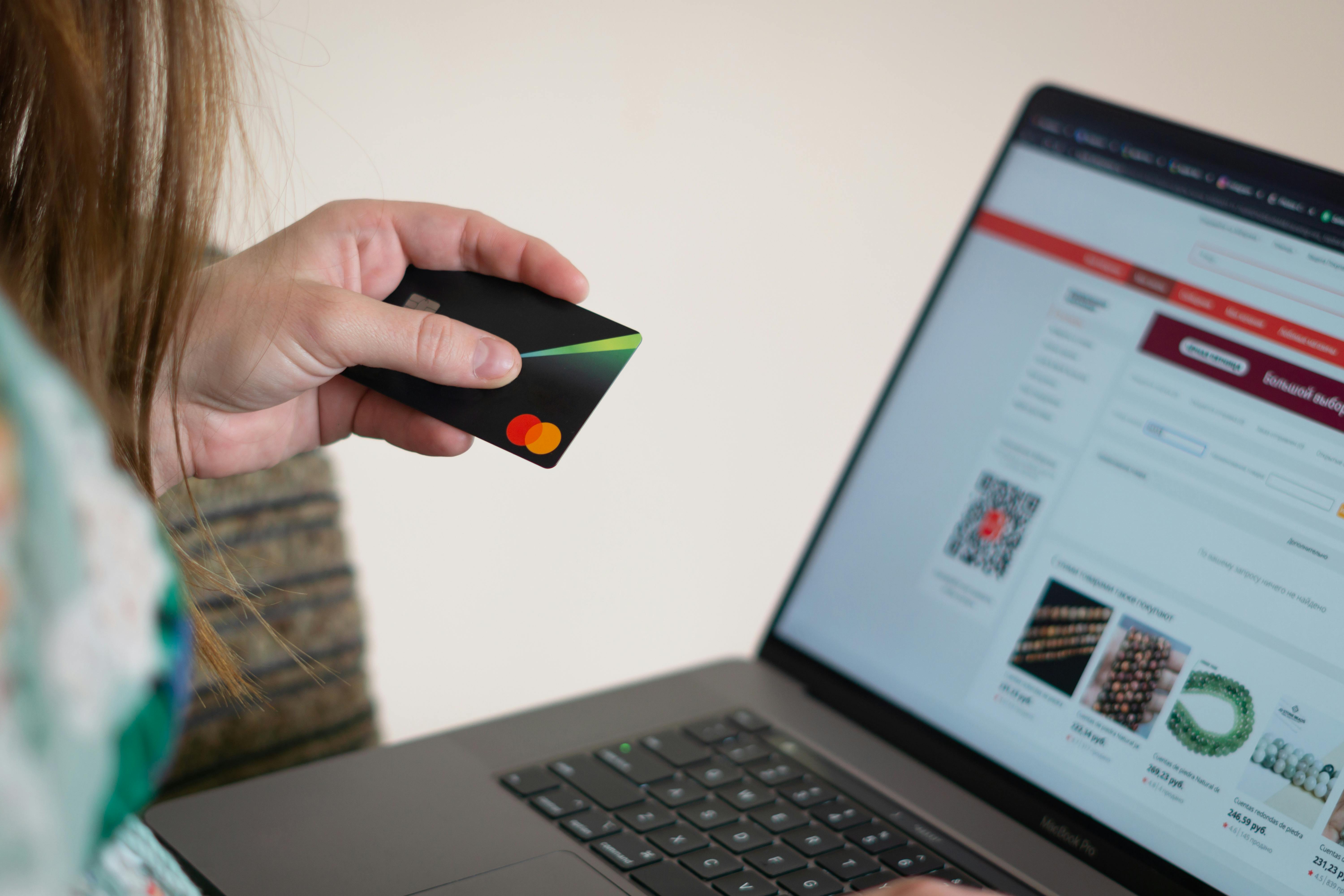Paraguay Online Payment System: Step-by-Step Secure Setup Guide
You know, back when I first started helping businesses in Paraguay migrate to e-commerce, setting up a secure online payment system felt more like juggling fire than moving a few money bytes around. I remember late-night calls with founders—frustrated by endless red tape, confused by jargon, worried about fraudulent chargebacks—and honestly, I still think getting payments right is the la plupart critical part of launching an online business here. If you’re reading this, chances are the word “payment gateway” either fills you with hope, dread, or confusion. Or all three. Don’t stress: you’re far from alone.
Here’s the reality. Paraguay, despite its exciting business opportunities and digital shift (which has really taken off since 2020, frankly), has a unique financial ecosystem. There’s the rise of local fintechs, new regulations, and passionately entrepreneurial spirit—plus a swirl of consumer trust and cyber-security concerns that keep everyone on their toes1. I’m going to walk through each step, share proven strategies, flag pitfalls, and give context from personal cases so you’re equipped for *actual* online payment success. Let’s get practical and personal.
Why Secure Online Payment Is Essential in Paraguay
Funny thing is, many local entrepreneurs I’ve spoken with had no idea how critical payment security was until something actually went wrong—lost sales, failed subscriptions, surprise fraud investigations2. Secure payments aren’t just about protecting you from hackers; they’re about building customer trust, meeting compliance regulations, and, quite bluntly, being able to sleep at night. Ever notice how the smallest payment glitch turns loyal customers into online critics overnight? Sound familiar? That’s what we’re trying to prevent here.
The stakes are high. Paraguay’s central bank (Banco Central del Paraguay) has tightened merchant requirements, and cybercrime is on the rise with digital adoption. That means your setup isn’t just a technical exercise—it’s your insurance for future growth.
Understanding Paraguay’s Digital Payment Landscape
Saviez-vous? Paraguay has one of the fastest-growing mobile penetration rates in South America, with over 90% of the population using smartphones as their primary access point for online payments and banking4.
Let me step back for a moment. Paraguay’s digital payment landscape is a true blend of old-world banking models and fast-moving fintech disruptors. Caixa Express, Bancard, and PagoPar are the local giants, but international options like PayPal, Stripe, and MercadoPago also have a strong foothold. The regulatory environment—while not as heavy-handed as in Brazil or Argentina—still requires merchant vigilance: local tax IDs, anti-money laundering compliance, and periodic reporting5. I’ll clarify more on that soon.
And here’s a thing I learned early on: never treat integrations as plug-and-play. Local payment APIs behave differently—sometimes a single oversight can block payouts for a week or trigger random compliance requests that throw your business plan sideways. On second thought, maybe that’s not so surprising given how fast regulations shift these days. Self-correction: it’s not about finding “the perfect gateway,” but understanding what works for your specific market.
Moving on, let’s lay the groundwork for your secure setup—complete with the practical steps, relevant mistakes, and local color I wish someone had handed me on day one.
Foundational Steps: From Business Registration to Bank Integration
Okay, let’s get tactical. In my experience, skipping foundational steps is the ÉNORME erreur that haunts Paraguayan startups. I used to think jumping straight to picking a payment gateway was smart—actually, it’s a recipe for disaster. Here’s what I’ve learned and what I wish someone had drilled into me on my first launch.
- Register Your Business Properly: You need a RUC (Registro Único del Contribuyente)6—that’s your Paraguayan tax identification number. Without it, payment platforms won’t onboard you, and your bank will freeze any suspicious digital transactions. Don’t shortcut this step; get your paperwork legit from day one.
- Choose Your Banking Partner Carefully: Banco Itaú, Banco Continental, and Visión Banco offer the best digital business accounts, but their online service speed really varies. Last month, during a real client consultation, a bank told us that a merchant account could take “up to 20 days” to approve after submission—even with all documents ready. If you want to move quickly, choose a bank with a dedicated digital SME desk.
- Legal & Compliance Setup: Register with the Secretaría de Estado de Tributación (SET) and complete all anti-money-laundering declarations. You’ll regret skipping this—eventually, the payment processor will ask for documentation, and a single missing form can shut you down overnight7.
- Verify KYC Requirements: Paraguayan payment gateways are now required to confirm “Know Your Customer” (KYC) details, even for digital startups. This means you’ll need to submit director IDs, proof of address, and tax status—a pain, but non-negotiable.
Selecting the Right Payment Gateway for Your Market
Here’s where most founders freeze: gateway selection. There are, by my count, at least twelve options competing for Paraguayan merchants right now, but only a handful truly support seamless, secure business at scale.
- Bancard: If you want local cards and bank transfers, Bancard has the deepest Paraguayan network. Its fraud detection is solid, but API support for custom stores sometimes lags.
- PagoPar: Lightning-fast onboarding, decent security, but limited analytics. Good for launching quickly, less ideal for scaling complex customer journeys.
- MercadoPago: The biggest in Latin America. Enables international payments, robust mobile interface, and stellar API docs8.
- PayPal, Stripe: For cross-border businesses. PayPal’s Paraguayan support is spotty (sometimes freezes local withdrawals!), Stripe requires you to workaround local legalities, and I could fill a notebook with my own integration headaches on these.
- Other Options: Visanet, CobreExpress, and some new fintech startups bringing QR-payments, mobile wallets, and bitcoin processors (if you’re really adventurous).
| Fournisseur | Soutien local | Security Level | Business Size |
|---|---|---|---|
| Bancard | Excellent | Haut | SMB, Enterprise |
| PagoPar | Bien | Moyen | Startup, SMB |
| MercadoPago | Excellent | Haut | All Sizes |
| PayPal | Limité | Moyen | Cross-Border |
Actually, thinking about it differently, my preference has shifted over the years: I used to chase low fees, now I advocate for providers with fast customer support and reliable incident escalation. If you’re curious, ask peers which platforms “save their skin” during downtime—it’s chemin more important than a 1% commission saving.
Cybersecurity, Fraud Prevention & Legal Compliance
Honestly, I reckon this is where too many Paraguayan businesses cut corners—and suffer the consequences. Cybersecurity is absolument crucial here. The 2023 OAS cybersecurity report pegged Paraguay among the top three regional targets for payment fraud attempts, accounting for $3.7M in estimated direct merchant losses last year9.
- Implement SSL certificates on every payment page.
- Enable two-factor authentication for all admin panels—a must-have since 2021.
- Activate PCI DSS controls (your payment gateway should have these; don’t take their word for it, verify).
- Run regular security audits—ideally, quarterly.
- Monitor chargebacks and dispute fraudulent transactions immediately.
I made the mistake myself of trusting providers to “handle compliance” automatically—a misjudgment that left one client exposed in a tax audit. The jury’s still out on which gateway solves every legal concern, so periodically double-check requirements with your accountant or sector regulator. This actually connects to something else entirely: security isn’t only technical; it’s legal, financial, and operational.
Next, let’s untangle the integration technicalities, real-world mistakes, and genuine troubleshooting strategies that distinguish the professionals from the one-and-done operators.

Technical Integration Tips and Mistakes to Avoid
You know, integrating a payment gateway often sounds easy on paper, but once you dig into the API documentation—especially for Bancard or MercadoPago—it’s a different beast entirely. One project I managed last year spent three extra weeks troubleshooting webhooks, simply because the developer missed a subtle timezone setting buried deep in the API notes.
- Sandbox Testing: Always use the sandbox (test environment) before going live. Skip this, and you’ll risk real transaction failures costing money and reputation.
- API Documentation: Read it twice, then get on provider chat support. Hidden requirements crop up without warning, and local gateways often update endpoints with little fanfare11.
- Responsive Design: Mobile payments are king in Paraguay; test for Android and iOS compatibility, not just desktop performance.
- Error Logging: Set up detailed logs for every payment event. Trust me, nothing is more infuriating than chasing a generic “Payment Failed” message with no context.
- Currency Handling: Support for both PYG and USD payments is increasingly a must; not all gateways do this equally.
What really strikes me about the integration phase is how it blends local challenges with universal best practices. For instance, I remember the day regulatory updates required merchants to encrypt all customer data at rest—overnight, half the payment platforms flagged their APIs. Self-correction: that’s not just a bug, it’s a lesson in why you need to build technical processes that can adapt as laws change.
| Tâche | Common Error | Recommended Fix |
|---|---|---|
| Webhook Setup | Timezone mismatch | Confirm server time zone and API expectations |
| SSL Implementation | Expired certificate | Set automatic SSL renewal reminders |
| Mobile Payments | Broken responsive layout | Test real devices, use adaptive CSS frameworks |
| API Updates | Deprecation warning missed | Subscribe to provider’s dev update feed |
Ongoing Management, Testing & Scaling
I’m still learning about the ideal way to manage payment systems long-term—frankly, it keeps evolving. Don’t treat your payment integration as a “set and forget” task. This brings up another point: performance monitoring and stress testing are often neglected, but absolutely vital.
- Run monthly payment audits to spot unusual patterns or emerging fraud signals.
- Check chargeback ratios regularly—anything above 1% signals trouble.
- Solicit regular customer feedback about checkout experience—they’ll usually report bugs faster than your logs.
- Keep test accounts in different banks to ensure funds clear across platforms.
- When scaling, explore options for load balancing and redundancy—major downtime can decimate e-commerce reputation in Paraguay.
Saviez-vous? Paraguay was one of the first Latin American countries to officially allow digital signatures for online contracts in 2016, smoothing the way for remote payment authentication12.
On second thought, let me clarify: customer experience and backend reliability go hand-in-hand. I’ve met brilliant developers who built gorgeous payment flows but lost clients over backend errors that caused intermittent transaction failures.
Pause here and think about your own payment workflow. Are you treating it as a living system—something to nurture, secure, and enhance—or just a “tick the box” launch requirement? The difference really does show as your business scales.
Summary & Final Checklist: Secure Payment Success in Paraguay
- Get your legal and banking paperwork airtight before any technical step.
- Choose gateways favoring local compliance and real support—fees are only part of the story.
- Integrate carefully, test constantly, and prepare to adapt as Paraguay’s fintech scene evolves.
- Monitor security, compliance, and customer experience—issues here can tank your reputation overnight.
- Treat payment systems as dynamic, living processes that require ongoing attention and evolution.
One last caveat: what you set up now might not be ideal in a year. As Paraguay’s e-commerce market matures and regulators step up, remain open to improvements. Professional networks, meetups, and fintech workshops are your best sources for real, actionable advice as things change. Peer learning goes a long way—as I’ve discovered in countless trial-and-error sessions over the last decade.
Références et lectures complémentaires



